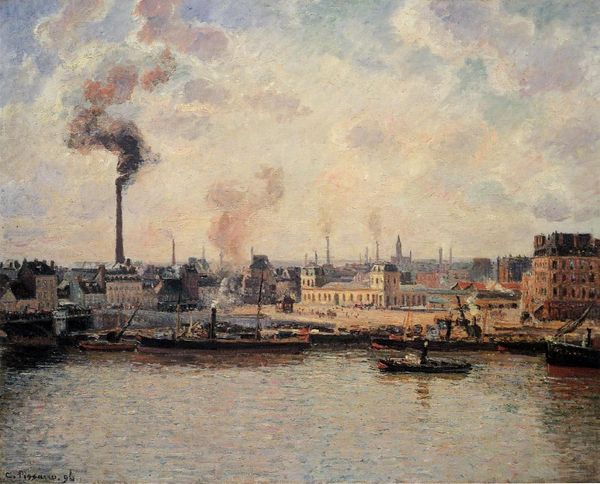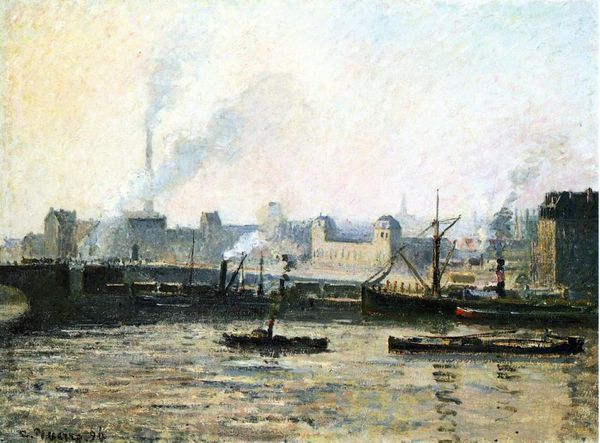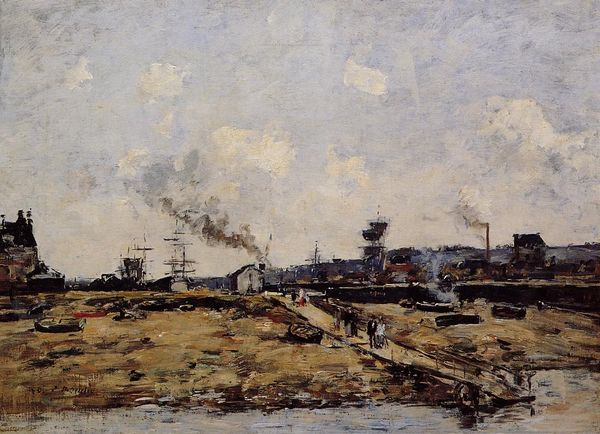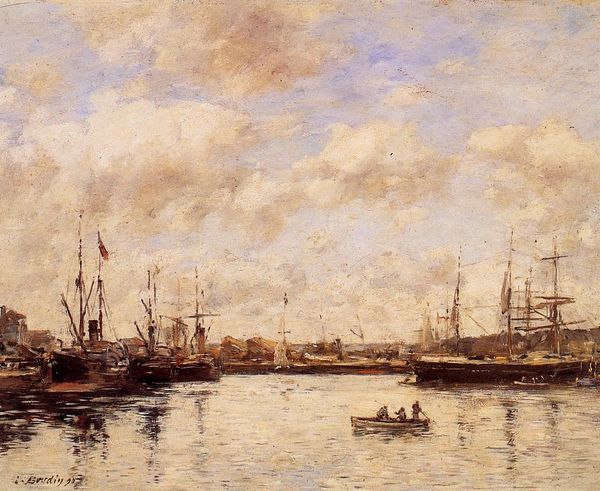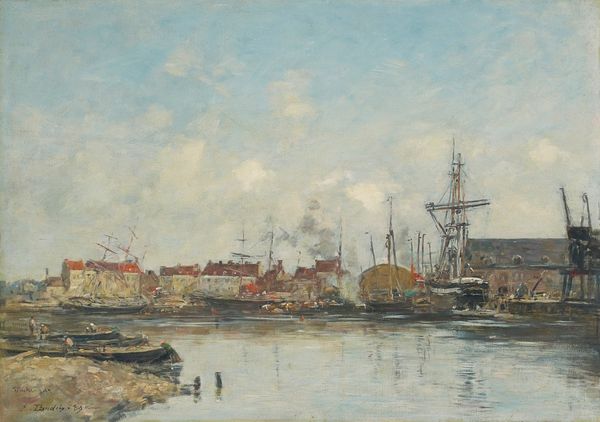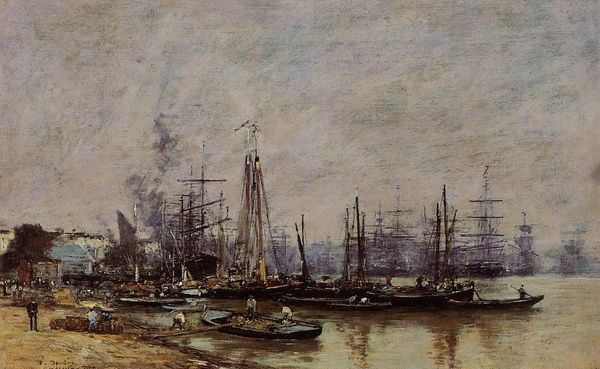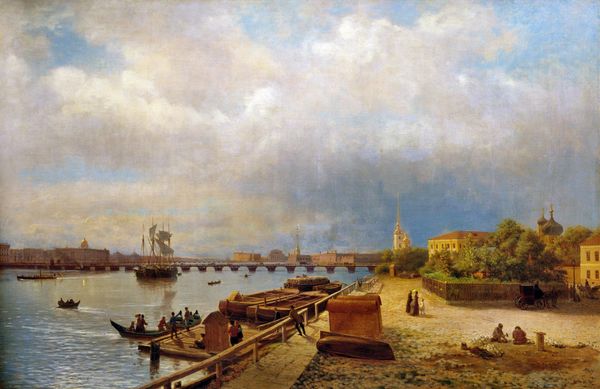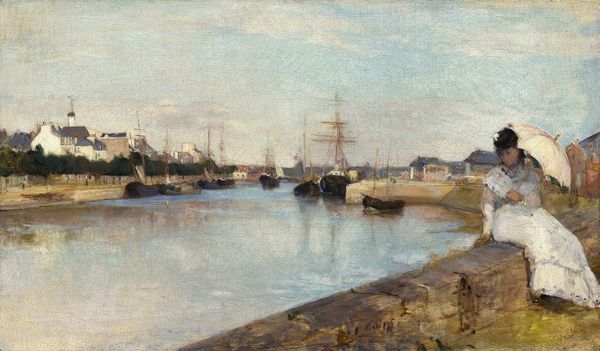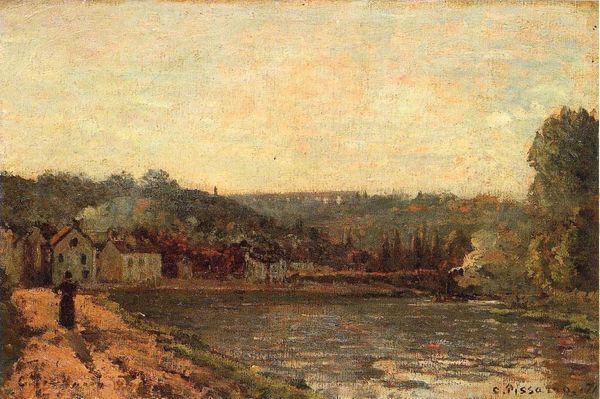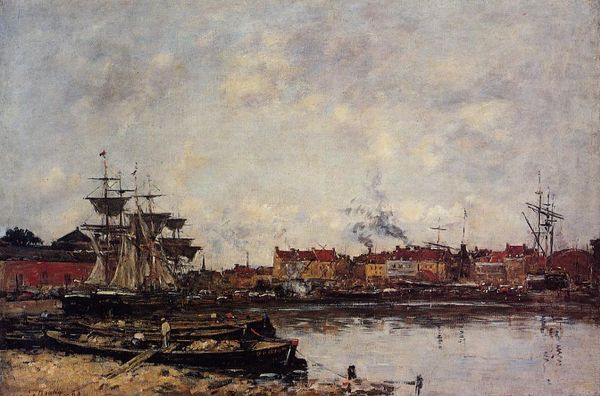
Copyright: Public domain
Curator: At first glance, there’s something unsettlingly peaceful about this painting. The muted tones and the hazy sky… Editor: This is "Port de Grenelle," painted by Paul Gauguin in 1875. It's an oil painting that captures a scene on the Seine, now held in a private collection. It’s quite an early work for Gauguin. Curator: You know, I’m drawn to the smokestacks belching into that pallid sky. There’s a visual tension between the brushstrokes evoking nature and those industrial elements. The smoke itself seems to mirror the water. It gives an atmospheric continuity between production and environment. Editor: Agreed. He clearly wanted to portray modernity, but not idealize it. What strikes me formally is the composition. The strong horizontal of the river divides the canvas, while the buildings anchor the left side and the bridge provides balance on the right. Curator: I see this more as Gauguin's negotiation with his immediate surrounding. His choice of the 'plein-air' method is, in itself, revealing of his relationship with nature. It suggests an openness to, and reliance on, that relationship in his artistic practice, albeit framed by industry. Consider that, during this period, there was significant urbanization along the Seine. The area became a locus of labor and industry that supported rapid growth within Paris, altering both land and social structure. Editor: Yes, and those reflections on the water! The broken brushwork, a clear nod to Impressionism, is masterful in its creation of depth and light. It allows for an engaging composition that shows us a glimpse of a world in motion. There is a play with light and shadow that hints at depth and volume, yet still prioritizes capturing a moment of atmosphere and impression. Curator: So it's more than a picture-postcard landscape, right? It is deeply intertwined with human activity, industrial advancements, and the commodification of the physical world in post-industrial revolution France. To consider this early in his artistic explorations lets us consider how these influences drove his career onwards. Editor: Precisely. And those early formal experiments in capturing the industrial Seine foreshadow his later stylistic development. A vital bridge, you might say, between observation and form.
Comments
No comments
Be the first to comment and join the conversation on the ultimate creative platform.
